Note
Go to the end to download the full example code
Select and modify data#
This example shows how to select data in a CrystalMap, obtain
a new map from parts of the data and modify data inplace.
- There are five ways to select data:
NumPy slice(s)
By one or more indices
Per phase(s)
Points considered “indexed”/”not_indexed”
Boolean indexing
from typing import List, Union
import matplotlib.pyplot as plt
import numpy as np
from orix import plot
from orix.crystal_map import CrystalMap, Phase
def plot_id(
xmaps: Union[CrystalMap, List[CrystalMap]], titles: Union[str, List[str]]
) -> None:
"""Convenience function to plot at most four crystal maps showing
rows, columns and IDs of each map point.
"""
if isinstance(xmaps, CrystalMap):
xmaps = [xmaps]
titles = [titles]
n_xmaps = len(xmaps)
if n_xmaps > 2:
fig_rows, fig_cols = 2, 2
else:
fig_rows, fig_cols = 1, len(xmaps)
fig = plt.figure()
for i in range(n_xmaps):
ax = fig.add_subplot(fig_rows, fig_cols, i + 1, projection="plot_map")
ax.plot_map(xmaps[i], "id", scalebar=False)
rows, cols = xmaps[i].row, xmaps[i].col
ax.set_xticks(np.arange(np.max(cols) + 1))
ax.set_xticklabels(np.arange(np.max(cols) + 1))
ax.set_yticks(np.arange(np.max(rows) + 1))
ax.set_yticklabels(np.arange(np.max(rows) + 1))
ax.set_xlabel("Column")
ax.set_ylabel("Row")
ax.set_title(titles[i])
for j, r, c in zip(xmaps[i].id, rows, cols):
ax.text(c, r, j, va="center", ha="center", c="r")
fig.tight_layout()
We start by creating a crystal map with five rows and ten columns with all points having one phase and an identity rotation, and plot the row and column coordinates as well as the map ID of each point into the originally created map
xmap = CrystalMap.empty(shape=(5, 10))
xmap.phases[0].name = "a"
print(xmap)
plot_id(xmap, "Initial map")
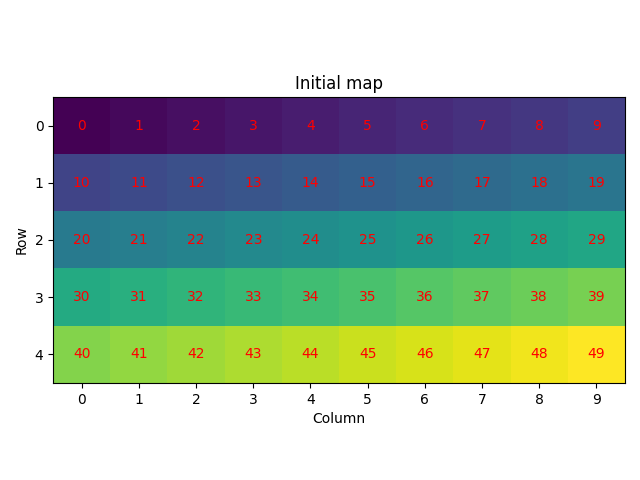
Phase Orientations Name Space group Point group Proper point group Color
0 50 (100.0%) a None None None tab:blue
Properties:
Scan unit: px
Slice the map (1) by selecting some rows and columns. We’ll plot the IDs again and see that these do not update after slicing. We’ll also select some values from the sliced map (2) by passing one or more indices
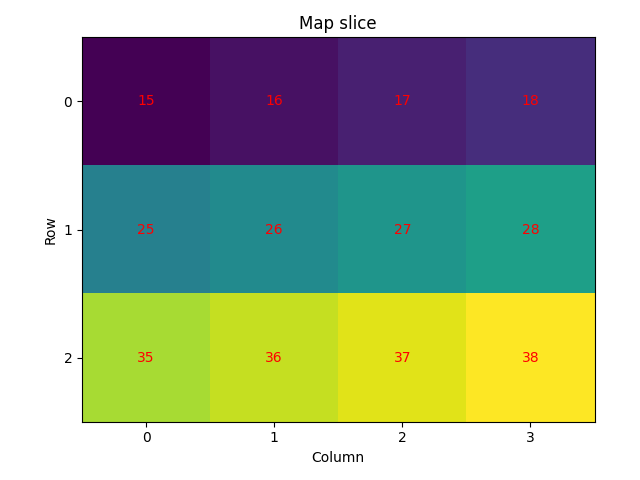
[15]
[35 36 37 38]
[16 26 36]
Select data based on phase(s) (3) after adding a new phase to the phase list and giving some points in the data the new phase ID by modifying the phase IDs inplace
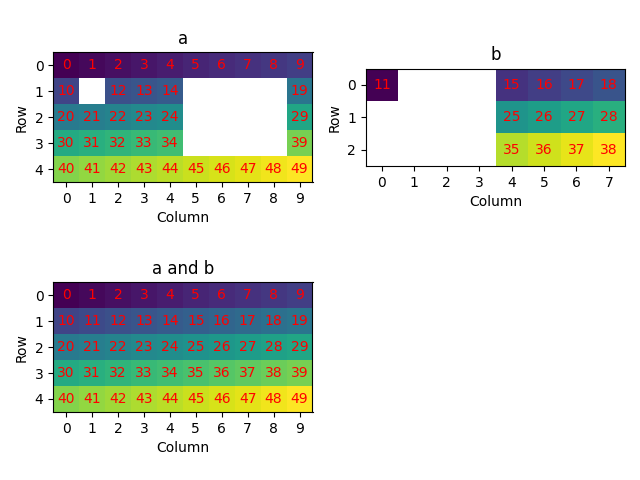
Phase Orientations Name Space group Point group Proper point group Color
0 37 (74.0%) a None None None tab:blue
1 13 (26.0%) b None None None tab:orange
Properties:
Scan unit: px
Set some points to not indexed and select only the indexed data or the not indexed data (4)
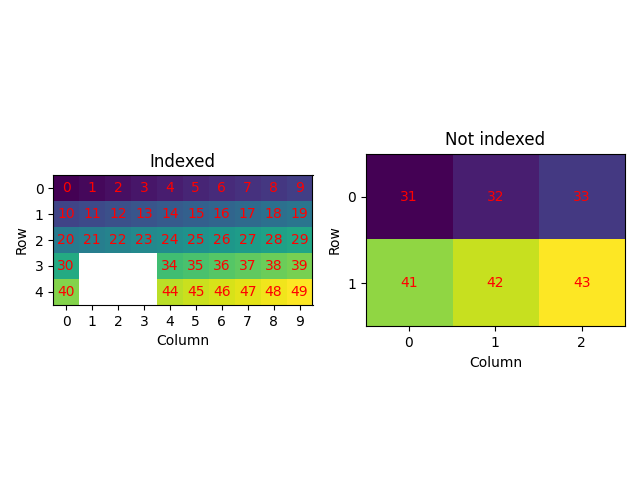
Phase Orientations Name Space group Point group Proper point group Color
-1 6 (12.0%) not_indexed None None None w
0 31 (62.0%) a None None None tab:blue
1 13 (26.0%) b None None None tab:orange
Properties:
Scan unit: px
Select data satisfying one or more criteria using boolean arrays (5)
plot_id(
[
xmap[xmap.id > 10],
xmap[(xmap.phase_id == 0) & np.mod(xmap.id, 2).astype(bool)],
xmap[(xmap.phase_id == 1) | ~xmap.is_indexed],
],
["Id greater than 10", "a and odd ID", "b or not indexed"],
)
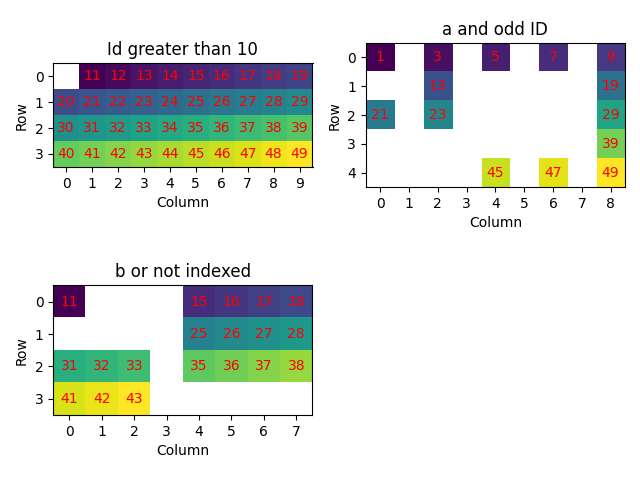
When obtaining a new map from part of another map, the new map is a shallow copy of
the initial map. This means that changes to the new map also changes the initial map.
When this is undesirable, we make a deep copy by calling
deepcopy().
xmap3_shallow = xmap["b"]
xmap3_deep = xmap["b"].deepcopy()
xmap3_shallow[1, 5].phase_id = -1
xmap3_deep[1, 6].phase_id = -1
plot_id(
[xmap["indexed"], xmap3_shallow["indexed"], xmap3_deep["indexed"]],
["Initial, indexed", "b shallow copy, indexed", "b deep copy, indexed"],
)

Total running time of the script: (0 minutes 2.248 seconds)
Estimated memory usage: 19 MB
